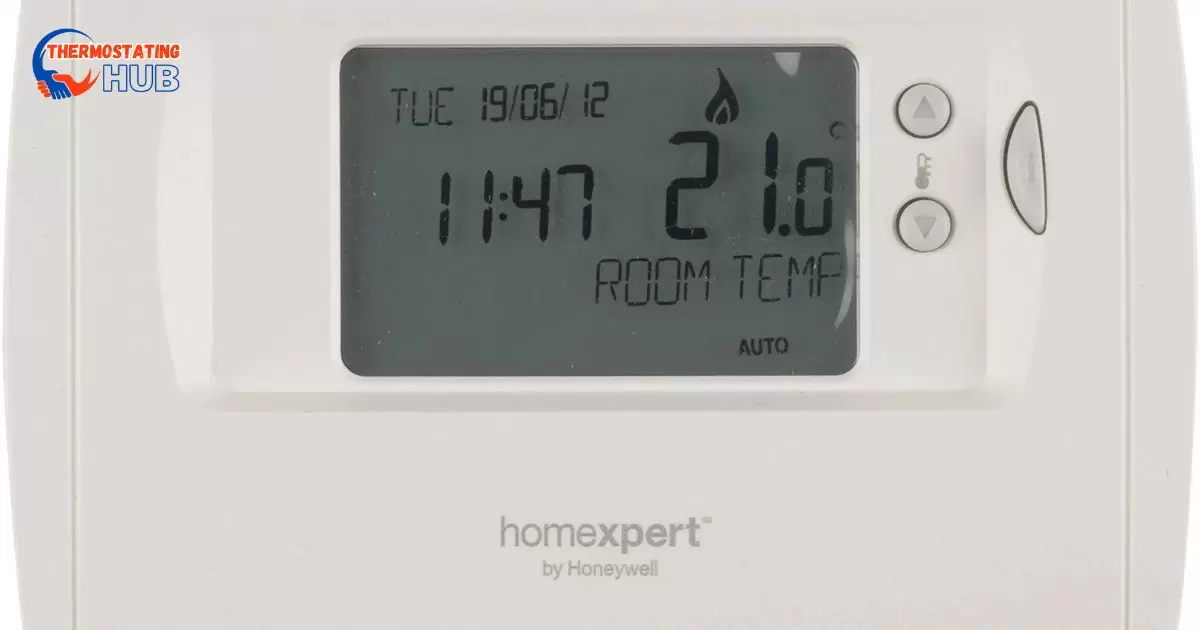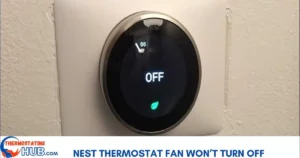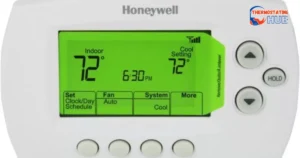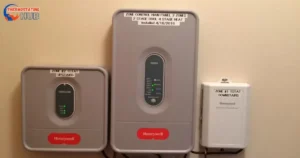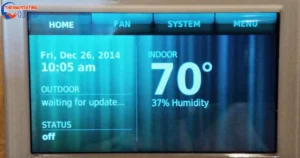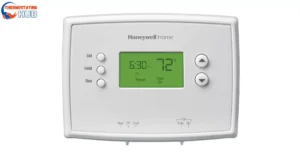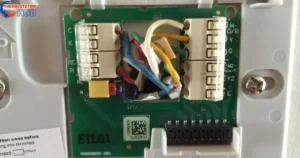A Honeywell thermostat is helpful and saves energy, but sometimes it might have problems connecting to other devices. If your Honeywell thermostat can’t talk to the Wi-Fi, it can be annoying and make it hard to control your home’s temperature. Luckily, there are things you can do to figure out and fix this issue.
Are you experiencing the frustration of a Honeywell thermostat that refuses to connect to your wireless network? This common issue can disrupt the comfort and efficiency of your home’s heating system. Resolving this problem may involve simple steps that you can perform without professional assistance.
Let’s explore some troubleshooting methods to get your Sensi thermostat to communicate with your wireless network again.
Before you try to fix the thermostat, make sure your Wi-Fi is working. Check if other things using Wi-Fi at home are connecting okay. If they are working fine, but the thermostat isn’t, you can try something else to fix it.
Begin by confirming that your Wi-Fi network is functioning correctly. Ensure other devices in your home can connect without any issues. If they’re also experiencing connectivity problems, restart your router and check for any outages or settings that may affect the network’s performance.
Proximity to Router:
How far the thermostat is from the wireless router can weaken the signal. Try putting the thermostat near the router to see if they connect better. The signal might weaken if thick walls or things are in the way. Move the router or the thermostat to make them connect better.
The distance between your thermostat and the router can impact the connection. If your thermostat is far from the router, try moving it closer to improve the signal strength. Thick walls or interference from other electronic devices might also disrupt the connection.
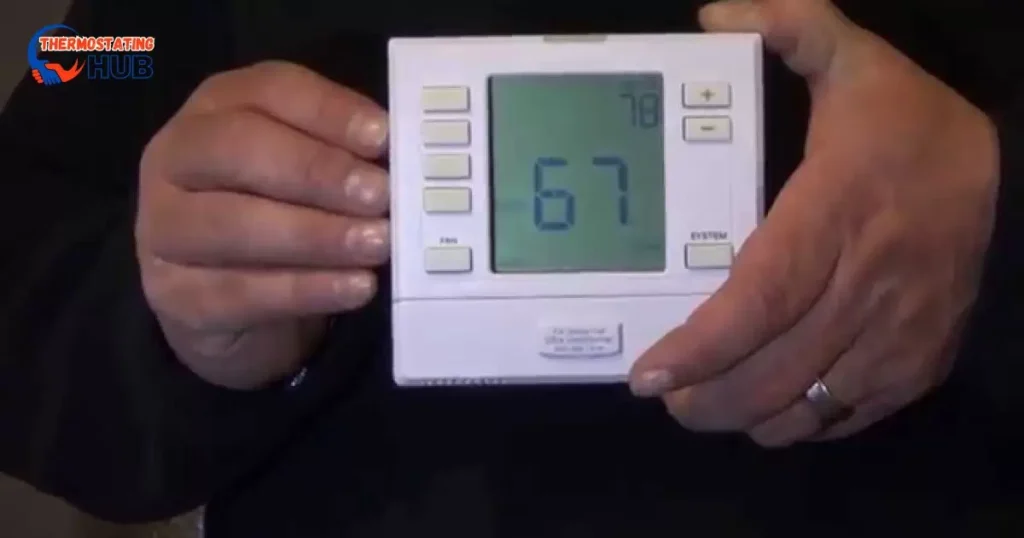
Go to the menu on the thermostat and find the Wi-Fi settings. Check that the thermostat is set to connect to the correct Wi-Fi network. Double-check the network name (SSID) and password to ensure they’re mistyped. Type them in if they need to be corrected, and try connecting again.
Verify that your thermostat’s settings align with the requirements of your wireless network.
Double-check the network name (SSID) and password entered in the thermostat to ensure they match your Wi-Fi credentials accurately.
Reset Network Settings
Reset the thermostat’s network. This clears old settings so you can set up Wi-Fi again from the beginning. Look at the user manual for steps on how to reset the network settings for your Honeywell thermostat model.
Perform a network reset on your thermostat to clear any previously saved settings or connectivity issues. Follow the manufacturer’s instructions to reset the network settings, and then attempt to reconnect to your Wi-Fi network.
Update Firmware
Old software in your thermostat might make it hard to connect correctly. Look to see if there are any new updates for your thermostat’s software. If there are, follow the instructions from the company that made the thermostat to put in the updates.
Outdated firmware can sometimes cause connectivity problems. Check for any available updates for your Sensi thermostat and follow the instructions provided by Honeywell to install the latest firmware.
Check Compatibility
Ensure your thermostat can work with your home’s Wi-Fi. Some older thermostats might not connect well because they don’t support some security rules or Wi-Fi types. Look at the user manual or check Honeywell’s website to see if your thermostat will work with your Wi-Fi.
Confirm that your thermostat is compatible with your Wi-Fi network specifications. Specific older models might not support newer network configurations, leading to connectivity issues.
Router Settings
Some settings on your internet router, like MAC address filtering or unique firewall setups, might stop the thermostat from connecting to the internet. Look at your router’s settings and ensure they let the thermostat connect properly.
Access your router’s settings and ensure it’s not blocking the thermostat’s connection. Look for settings like MAC address filtering or security configurations that might prevent the thermostat from connecting.
Restart Router and Thermostat
When things like your internet or devices that control your home’s temperature aren’t working, just turning them off and on again can help fix the problem. To do this, switch off both your router (the thing that gives you internet) and your thermostat (the device that controls the temperature in your home).
Wait for a few minutes, then turn them back on. Let them start up completely, and then try to connect them again. This might help them work properly once more.
A simple reboot can often resolve connectivity issues. Turn off your router and thermostat, wait a few minutes, and then power them back on. This may re-establish the connection.
Contact Honeywell Support
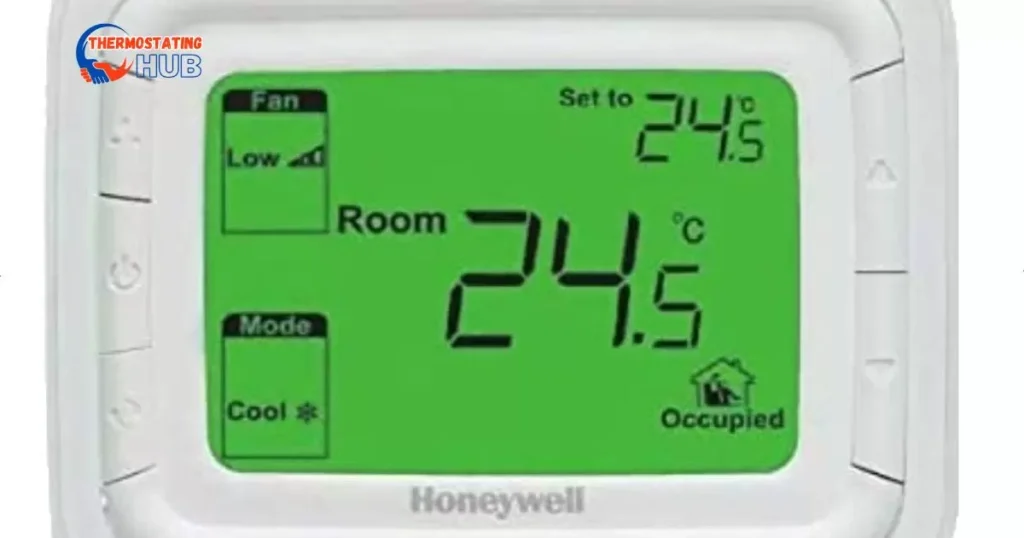
If the steps mentioned above don’t fix the problem, contact Honeywell’s customer support. They can give you exceptional help and might know about any common issues with your particular product.
If all else fails, reach out to Honeywell’s customer support. They have dedicated technical experts who can guide you through advanced troubleshooting steps or further assist.
Future Scope
As technology continues to evolve, the future scope for Honeywell thermostats and their wireless connectivity holds promising advancements. Here are potential areas where developments might enhance user experience and resolve connectivity issues:
1. Enhanced Connectivity Protocols: Future Honeywell thermostats may integrate with advanced wireless protocols, ensuring more stable and reliable connections. Innovations like Wi-Fi 6 or even newer iterations can provide better coverage and reduced interference, enhancing the overall performance of the thermostat’s connectivity.
2. IoT Integration: The Internet of Things (IoT) will likely play a significant role in the future of smart home devices. Honeywell thermostats may integrate more seamlessly with other IoT devices, allowing for more comprehensive and interconnected smart home systems. This integration could streamline user experiences and provide greater control over home environments.
3. Artificial Intelligence (AI) Integration: Incorporating AI into thermostat technology can optimize energy usage and improve user convenience. AI algorithms could learn and adapt to users’ preferences, automatically adjusting settings for maximum comfort and energy efficiency based on patterns and external factors.
4. Improved User Interface: Future Honeywell thermostats may feature more intuitive interfaces, making it easier for users to troubleshoot connectivity issues or navigate settings. Enhanced user interfaces, through touchscreen improvements or voice-command integration, can simplify setup and troubleshooting processes.
5. Cybersecurity Measures: With increasing concerns about cybersecurity, Honeywell is likely to focus on implementing robust security measures in their thermostats. Enhanced encryption protocols and security features will safeguard sensitive data, ensuring a secure connection between the thermostat and the wireless network.
Read Also: Nest Thermostat Not Heating [Causes and Fixes]
6. Remote Diagnostic Capabilities:
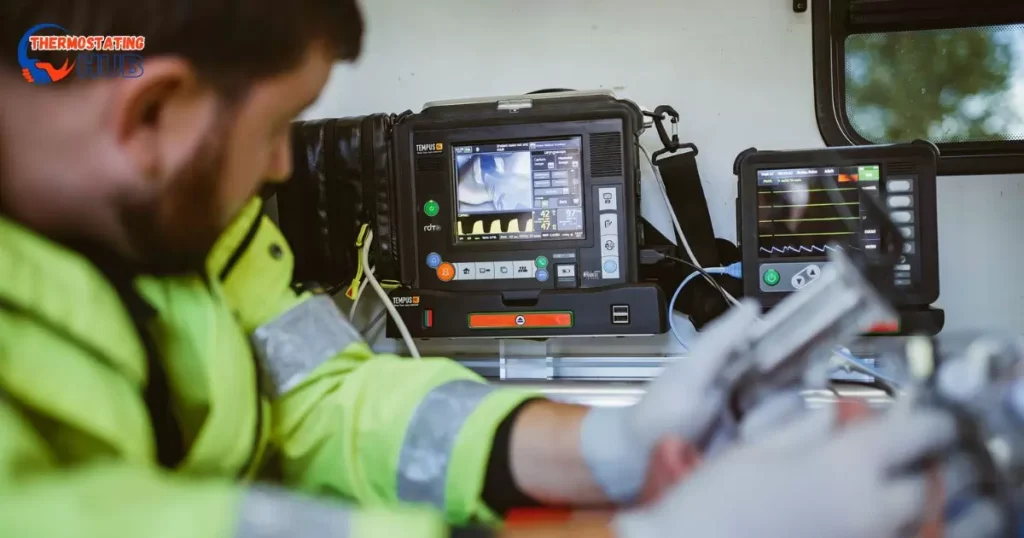
Future thermostats may offer advanced remote diagnostic capabilities, allowing Honeywell support or users to diagnose connectivity issues more accurately. This feature could enable quicker troubleshooting and resolution of problems without on-site assistance.
Pros:
- Energy Efficiency: Honeywell thermostats with wireless connectivity enable users to create schedules, optimizing energy usage by adjusting temperature settings when needed. This can lead to potential energy savings.
- Convenience: The ability to control the thermostat remotely through smartphones or devices enhances user comfort, allowing adjustments from anywhere.
- Smart Home Integration: These thermostats seamlessly integrate with other smart home devices, facilitating automation and customized home settings.
- Remote Monitoring: Users can monitor their home’s temperature remotely and make necessary adjustments, ensuring comfort even when away.
- Software Updates: Manufacturers can push firmware updates remotely, ensuring the thermostat remains updated with the latest features and security enhancements.
Cons:
- Initial Setup Complexity: The setup process for wireless connectivity might be challenging, especially for less tech-savvy users.
- Dependence on the Internet: Reliance on a stable Internet connection means outages can disrupt remote access and control.
- Compatibility Issues: Incompatibility with certain routers or network settings might cause connectivity problems.
- Security Concerns: Wireless connectivity introduces potential vulnerabilities to cyber threats, requiring robust security measures.
- Reliability of Remote Control: Connectivity issues or server problems may hinder the ability to control the thermostat remotely.
For Easy Understanding, Here’s a detailed table outlining the pros and cons of Honeywell thermostats with wireless connectivity:
| Pros of Honeywell Thermostats with Wireless Connectivity | Cons of Honeywell Thermostats with Wireless Connectivity |
| 1. Energy Efficiency: Allows for temperature scheduling, and optimizing energy use. | 1. Initial Setup Complexity: Setting up connectivity may be challenging. |
| 2. Convenience: Remote control via smartphones enhances user comfort. | 2. Dependence on the Internet: Relies on stable Internet; outages can disrupt control. |
| 3. Smart Home Integration: Connects with other smart devices for automation. | 3. Compatibility Issues: Incompatibility with certain routers or settings. |
| 4. Remote Monitoring: Users can monitor and adjust temperature remotely. | 4. Security Concerns: Potential vulnerabilities to cyber threats. |
| 5. Software Updates: Allows for remote firmware updates and new features. | 5. Reliability of Remote Control: May suffer from connectivity issues. |
Answers To Key Questions
Why is my thermostat not connecting to Wi-Fi?
If your thermostat is not connecting to Wi-Fi, check if your Wi-Fi network is operational and that the thermostat is within range. Ensure you’ve entered the correct Wi-Fi credentials on the thermostat and that it supports the frequency band (2.4GHz or 5GHz) required by your thermostat model. Rebooting the thermostat or resetting its Wi-Fi settings may also resolve connectivity issues.
How do I fix the Wi-Fi on my Honeywell thermostat?
To fix Wi-Fi issues on your Honeywell thermostat, verify that your home Wi-Fi network is working. Ensure the thermostat is within the Wi-Fi range and the network credentials are accurate. Reboot the thermostat, power cycle your router, or reset the thermostat’s Wi-Fi settings. If problems persist, consult the user manual or Honeywell support for specific troubleshooting steps.
How do you put a Honeywell thermostat in wireless mode?
Access the thermostat menu using the device’s interface to put a Honeywell thermostat in wireless mode. Navigate to the settings or configuration menu, locate the wireless or Wi-Fi settings, and follow the prompts to enable wireless mode. Refer to your thermostat’s user manual for detailed, model-specific instructions.
How does Honeywell thermostat communicate?
Honeywell thermostats typically communicate using Wi-Fi, allowing them to connect to your home network. Some models may also use other communication protocols like Zigbee or Z-Wave. Once connected, the thermostat can communicate with a corresponding mobile app or other smart home devices, enabling remote control and automation. Ensure your thermostat and connected devices are compatible and configured correctly for seamless communication.
Final Thoughts:
In troubleshooting a Honeywell thermostat’s wireless connectivity issues, begin by ensuring the Wi-Fi network’s functionality and checking the proximity to the router. Verify thermostat settings, reset network configurations, update firmware, and confirm compatibility.
Examine router settings for potential restrictions and reboot both router and thermostat. If problems persist, contact Honeywell support. Future developments may include enhanced connectivity protocols, IoT integration, AI implementation, improved interfaces, cybersecurity measures, and remote diagnostics.
Despite challenges, the pros of energy efficiency, convenience, smart home integration, remote monitoring, and software updates outweigh the cons like initial setup complexity and potential connectivity issues. Regular maintenance ensures optimal performance. 🏡

Ethan Richards here, your HVAC virtuoso at “Thermostating Hub.” From battling summer heat to conquering winter chills, I bring a wealth of HVAC knowledge. Let’s ensure your system runs smoothly, creating the ideal indoor climate for you.
